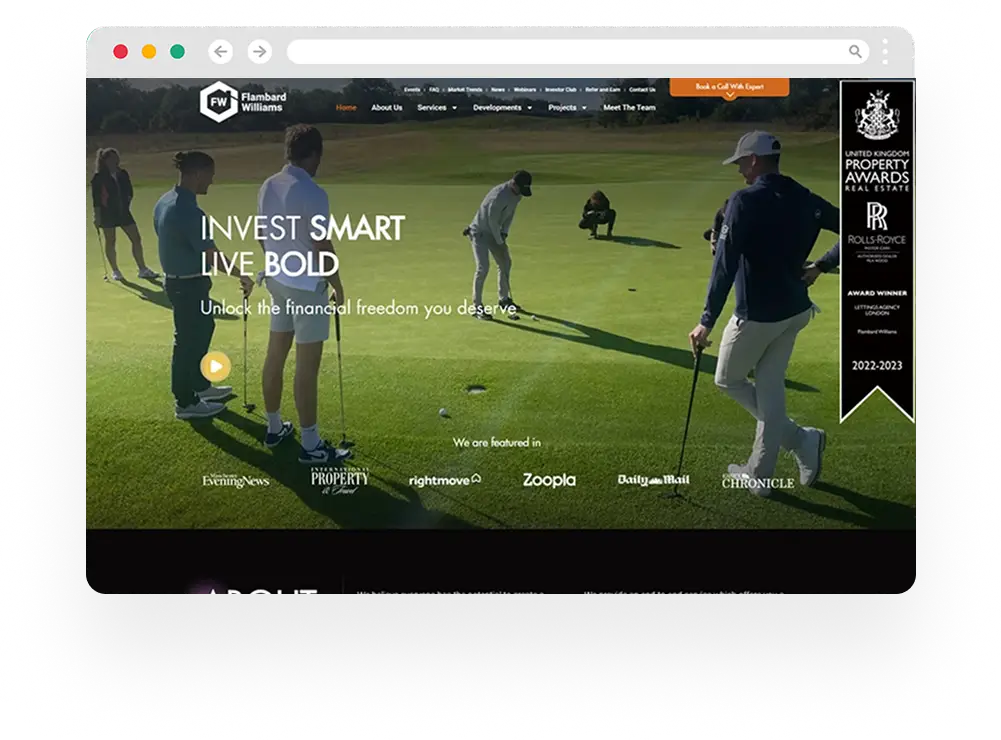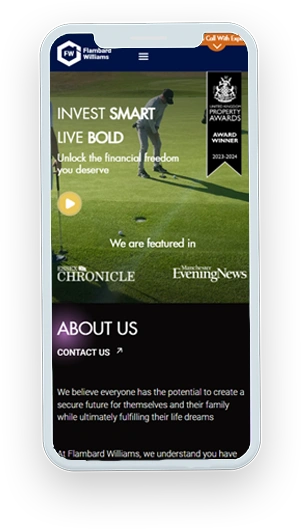10 Google’s SEO Guidelines To Improve Your SEO Strategy


Google SEO Guidelines
Table of Contents
Serious about growing your business? Let’s plan exactly how to get you more leads, sales, and results—faster.
Search is evolving. AGAIN.
But this time, Google isn’t just making small tweaks—it’s overhauling the entire control panel. With huge updates focusing on user experience, AI interpretation, and data privacy, SEO is entering a whole new era.
I see many people still using those same old 2020 tactics, relying on outdated methods that no longer align with what Google values today.
The truth is, if you’re still optimising like it’s 2020, you’re not just behind the curve—you’re invisible.
Let’s break down the latest Google SEO guidelines and explore how they’ll shape your SEO strategy moving forward.
Google SEO Update #1: Key UX Update
In 2025, Google announced to focus on the key UX metric of LCP, FID, and CLS. These are the three user experience metrics that now have a direct impact on your rankings.
- LCP (Largest Contentful Paint) – How fast your main content loads (target: under 2 seconds).
- FID (First Input Delay) – How quickly your page responds to user interactions (target: under 100ms).
- CLS (Cumulative Layout Shift) – How visually stable your page is as it loads (target: less than 0.1).
Marketing Research & Strategy
We help you understand your market and build smart strategies to attract more customers and grow faster.
- Detailed research into your competitors, customers, and market
- Custom marketing and growth plans that drive real results
- Clear action steps to increase traffic, leads, and sales

ADWORDS ROI
Cut Ad spend

Google now prioritises UX-first indexing—meaning if your site doesn’t meet these thresholds, even high-quality content may be demoted in the rankings.
- Use WebP or AVIF image formats to improve load speed.
- Implement lazy loading to prevent unnecessary resource strain.
- Defer or minimise non-essential JavaScript to cut interaction lag.
- Define image and video dimensions to avoid layout shifts.
Google SEO Update #2: E-E-A-T 2.0
Google’s emphasis on E-E-A-T (Experience, Expertise, Authoritativeness, Trustworthiness) is sharper than ever.
The March 2025 update especially hit hard for YMYL (Your Money, Your Life) sites—think health, finance, law—where firsthand experience is now just as critical as expertise.
- Experience is now weighted more than traditional "about us" bios.
- Content from certified professionals or field practitioners is prioritised.
- Sites without visible author credentials and citations are penalised.
- Add real-world case studies and personal narratives to articles.
- Clearly show author credentials and professional background.
- Build authority signals with backlinks from .edu, .gov, and recognised industry sources.
- Publish evidence-based content with cited sources or data logs.
ALSO READ: What is E-E-A-T in SEO?
Digital Marketing, SEO & PPC
- SEO to boost rankings and capture high-intent, AI-driven traffic
- Performance Marketing to run ROI-focused campaigns that convert
- Content Marketing to drive clicks, earn links, and build authority

Google SEO Update #3: AI-First Search
Google’s Gemini and MUM (Multitask Unified Model) technologies now power the majority of complex queries, shifting the SEO landscape toward semantic understanding and multimodal input.
- Google can interpret queries via text, voice, images—and combinations of all three.
- AI-driven answers now dominate above-the-fold space, often without requiring a click (aka Zero-Click Searches).
- Structure content as Q&A or step-by-step formats (great for AI summaries).
- Use semantic keyword clustering to help search engines understand topical depth.
- Optimise for long-tail conversational queries (e.g., “Best way to prepare for a half marathon if you're over 40”).
ALSO READ: Impact of AI in Marketing: 2025 & Beyond
Google SEO Update #4: Privacy-First SEO
As third-party cookies are phased out, SEO strategies must now revolve around first-party data and contextual targeting.
- No more cross-site behavioral tracking.
- Google prioritises sites that collect data directly and respect user privacy.
- Offer value-based lead magnets (e.g., ROI calculators, checklists) in exchange for email addresses.
- Build topic clusters that support contextual ads, especially in niches like fashion, wellness, or finance.
- Use predictive analytics tools (e.g., HubSpot, Adobe Sensei) to forecast content performance and user behavior using first-party data.
Google SEO Update #5: Help Google Discover Your Content
Google finds most web pages through links. So make sure your site is accessible, internally linked, and promoted.
- Internal linking: Connect related pages using meaningful anchor text (e.g., use “view our property listings” instead of “click here”). This helps users navigate and helps Google understand your site's structure.
- External linking: Link to reputable, relevant sources to support your content. It boosts user trust and context for Google.
- Use a sitemap: Submit it via Google Search Console to give Google a clear view of all your important pages.
Google SEO Update #6: Structure Your Site Logically
Organising your site helps both users and search engines.
- Use descriptive, keyword-friendly URLs: e.g. /properties/luxury-apartments-manchester instead of /listing?id=123.
- Group topically similar pages into folders (e.g., /services/, /locations/, /blog/) to help Google crawl smartly.
- Add breadcrumbs and navigation that reflect your site's hierarchy.
Google SEO Update #7: Create Unique, Valuable, and People-First Content
Quality content still rules SEO. Focus on:
- Clarity and readability: Use headings, short paragraphs, and plain language.
- Originality: Avoid duplicating other websites or even your own internal content. If you must repeat content (e.g., for legal pages), use canonical tags or redirects.
- Freshness: Update older pages regularly to keep them relevant.
- Personalisation: Tailor your content for specific audiences, speak directly to their pain points and goals. Use dynamic content tools where appropriate to adapt messaging based on user behavior or location.
Google SEO Update #8: Expect and Use the Right Keywords
Put yourself in your audience’s shoes, and THINK
- Consider different levels of awareness. Someone might search “first-time buyer advice” while another searches “best buy-to-let flats in Manchester.”
- Naturally weave keywords into titles, headings, and body copy. I would highly suggest you to completely avoid stuffing keywords.
Google SEO Update #9: Optimise Images and Multimedia
Images and videos can help your content stand out in search—if done right:
- Use high-quality images placed near relevant text.
- Add descriptive alt text for accessibility and context (e.g., alt="Luxury apartment balcony with city skyline view").
- Compress images to improve load speed without losing quality.
- Optimise file names (e.g., manchester-property-investment.jpg instead of IMG_1234.jpg).
- If using video, provide clear titles, descriptions, timestamp and transcriptions.
Google SEO Update #10: Keep Ads and Popups in Check
Well,
Ads are absolutely fine. But don’t let them ruin the experience.
Here’s what you can simply follow-
- Avoid aggressive popups, especially on mobile.
- Make sure ads don’t overshadow your content or slow down your site.
TL;DR – How to Future-Proof Your SEO Strategy in 2025
- Improve Core Web Vitals – Speed, responsiveness, and stability are non-negotiable.
- Prioritise E-E-A-T – Real experience and expertise are your biggest trust signals.
- Adapt for AI Search – Focus on structured, Q&A, and semantic-rich content.
- Go Cookie-Free – Build relationships through first-party data and contextual SEO.
- Lean into Video, Personalisation, and Sustainability – They’re the next frontier in SEO.
- Optimise for Privacy – Respect user privacy and collect data responsibly.
- Enhance Site Structure – Logical navigation and clear internal linking boost rankings.
- Create High-Quality Content – Prioritise originality, relevance, and user intent over keywords.
- Embrace Emerging Technologies – Stay agile with tools like predictive analytics and AI.
- Use Semantic Keywords – Organise content around semantic clusters to improve search engine understanding.
Final Thoughts
SEO isn’t a one-and-done deal.
It takes time for changes to show results. Some adjustments may take days, while others could take months.
But never be discouraged.
I would suggest you to keep an eye on your performance regularly. Use tools like Google Search Console and Analytics for this.
They’re your best friends when it comes to understanding what’s working and what needs a little fine-tuning.
With each Google Core Update and shifts in the Google ranking algorithm, it’s crucial to stay flexible.
Don’t be afraid to experiment. It’s important that you keep tweaking, testing, and optimising along the way.
Remember,
The key is to stay patient and focus on long-term value. Short-term tricks might give you a temporary boost, but it’s the steady, sustainable strategies that will make your site thrive in the ever-evolving Google algorithm.
Want to 10x Your Conversions with Google’s Latest Updates?
We’re offering an exclusive session where we dive deep into the latest Google updates and share how we’ve used them to 10X conversion rates for our clients.
In this session, you’ll get actionable insights on-
- Navigating the Google ranking algorithm
- Optimising for Google Core Updates,
- Leveraging the power of SEO to drive long-term growth.
Plus, we’ll walk you through the exact strategies that have delivered real, measurable results.
If you’re ready to take your SEO game to the next level and start 10Xing your conversions, then simply drop your email below,
And we’ll send you an exclusive invite to the session.
It’s time to turn your SEO efforts into results that speak for themselves!




